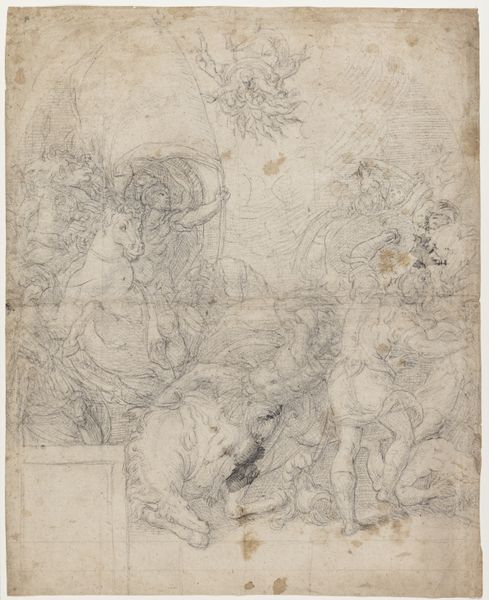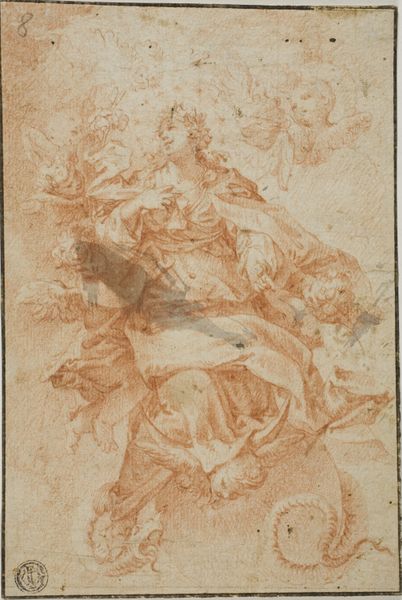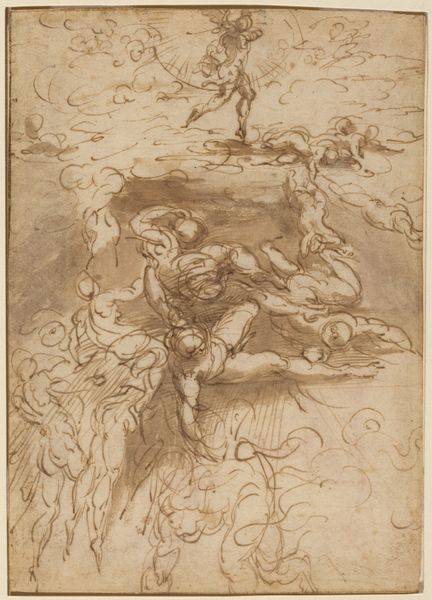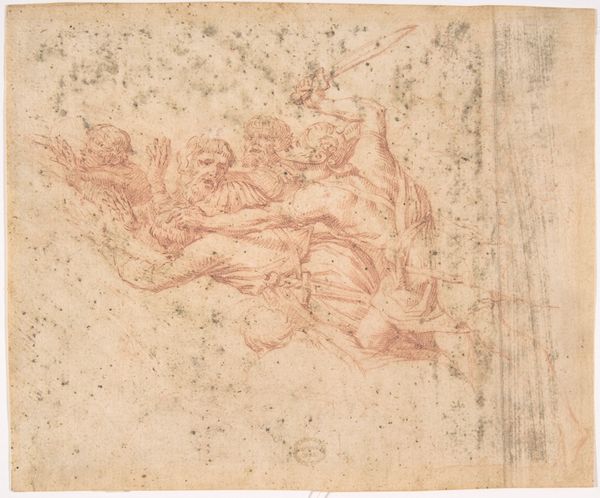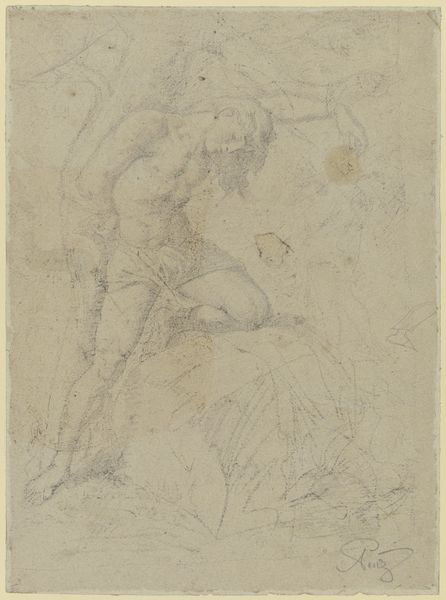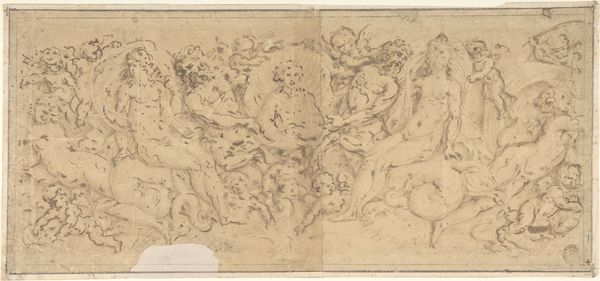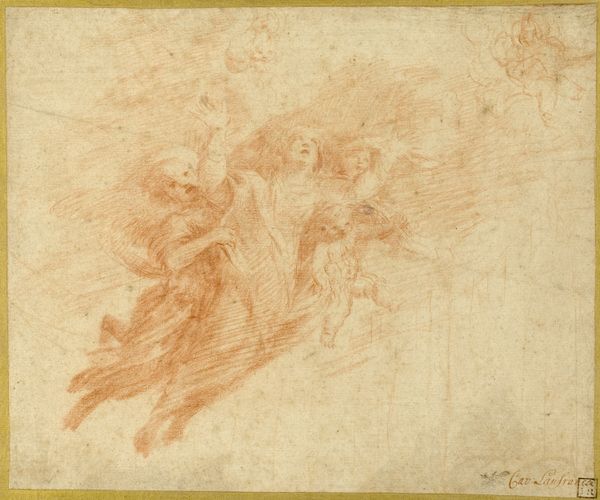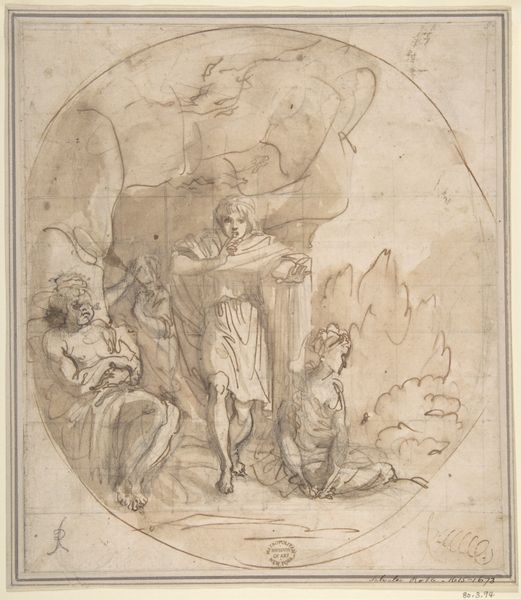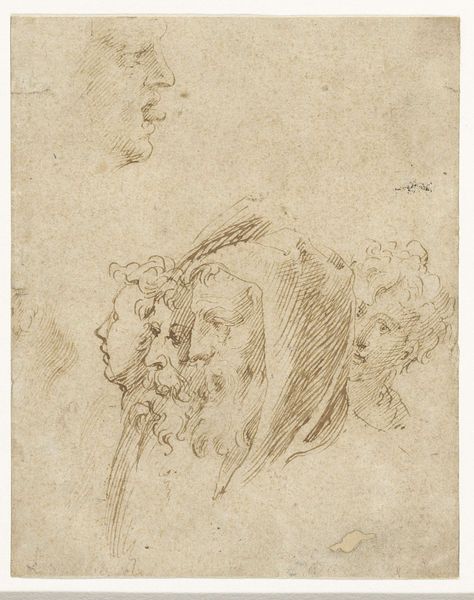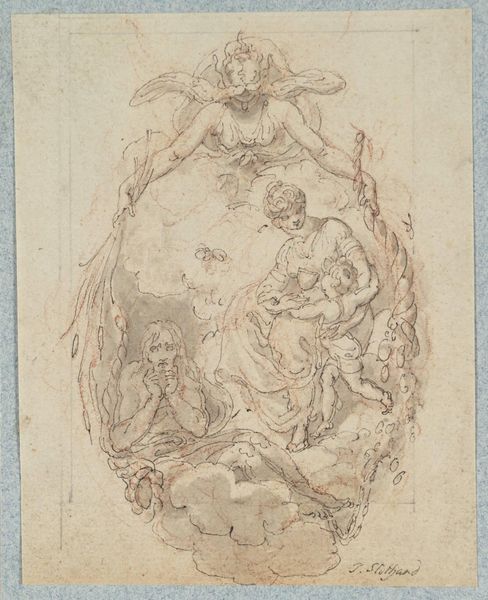
F.o. en siddende mand med en skrifttavle, f.n. to siddende putti med skrifttavler 1554 - 1555
0:00
0:00
drawing, charcoal
#
drawing
#
charcoal drawing
#
charcoal
#
italian-renaissance
Dimensions: 228 mm (height) x 167 mm (width) (bladmaal)
Curator: This drawing from 1554-1555 by Callisto Piazza, depicting a seated man with putti, offers a fascinating window into Renaissance workshop practices through its use of charcoal. What strikes you about it? Editor: The energy! It feels like a quick sketch, raw and immediate, especially with the visible charcoal strokes. How do you see the material contributing to the meaning or the context of this artwork? Curator: I’m drawn to the economic aspects of charcoal as the artistic medium. Unlike costly paints or precious metals, charcoal was inexpensive and readily available. Consider that it was a work material as much as an art material, also utilized by tradesmen, and this suggests something about Piazza’s target market. How does its "cheapness" potentially alter our traditional views of Renaissance artistic hierarchies? Editor: I see your point. If the material itself wasn't precious, perhaps the value shifted entirely to the artist's skill, making it more about the creative act and less about the inherent worth of the components? Curator: Precisely. Moreover, it allowed for revisions and experimentation. Could this suggest that the Renaissance workshop embraced trial and error more than previously acknowledged? Think of the discarded drawings, the labor of sourcing and producing charcoal...it's about more than just the finished product. Editor: This makes me reconsider the piece. It is like seeing the machinery behind a grand production. I was only thinking of "fine art," but seeing how it fits within broader artisanal and commercial activities changes my appreciation of it. Thanks! Curator: Absolutely, questioning those hierarchies reveals hidden narratives and the complex processes which underpinned the creation of even the most "precious" artworks.
Comments
No comments
Be the first to comment and join the conversation on the ultimate creative platform.

